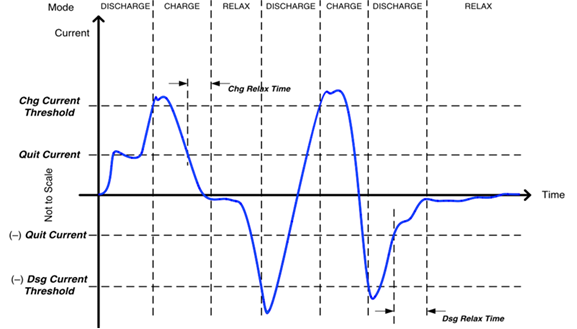SLUAA45 April 2020 BQ27Z561
-
End of Discharge SOC Jump Elimination
- Trademarks
- 1 Introduction
- 2 Improve Battery Modeling
- 3 Optimize Gauge Configurations
- 4 Achieve Successful Ra Table, Qmax and DOD0 Learning
- 5 References
3.1.3 Discharge Current Threshold and Quit Current
The gauge is configured to enter discharge mode when the discharge current exceeds Discharge Current Threshold, exit discharge mode when the current goes below Quit Current for a period of time, as shown in Figure 5. The two parameters should be set low enough to be below any normal application load current but high enough to prevent noise, drift or disturbance affecting the accurate capacity simulation.
 Figure 5. Gauge Operating Mode
Figure 5. Gauge Operating Mode Portable devices spend most of time in standby mode (for example, lock screen). There are cases where the gauge is in discharge mode for a long time with a very low standby current, then followed by a period of much higher load (e.g. leave the lock screen mode and fully turn on). The gauge cannot predict the higher load adequately if using the average load from start of discharge, leading to an undesired SOC jump.
It is recommended that you to set Discharge Current Threshold > Quit Current > device standby current. With these settings, the gauge will not enter or stay in discharge mode until there is a significant discharge. This excludes the standby load case from discharge mode. The gauge will still coulomb count and adjust remaining capacity during standby mode, but it will not perform capacity simulations or adjust the load prediction based on the small load, which fixes the jump.